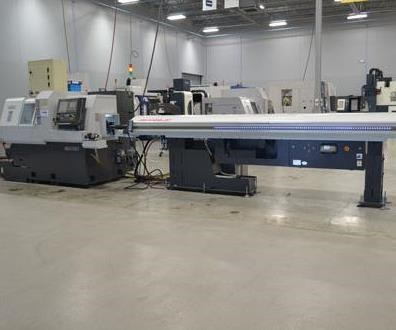The Basics Never Get Old
“Bar Feeder Basics” gives the reader some factors that should be considered when justifying a bar feeder for a shop’s turning operations.

Twelve-foot bar feeders are often considered a requirement for sliding headstock fixed lathes.
In manufacturing, reviewing the basics of a particular technology is almost always worth the time to take a look. The fact is, many of the fundamentals of metalworking are fairly constant even though speeds, feeds and productivity rise consistently.
“Bar Feeder Basics,” written by our senior editor, Chris Felix, gives the reader some factors that should be considered when justifying a bar feeder for a shop’s turning operations.
The article touches on the different types of bar feeders and how each can be best applied to different kinds of jobs. These include 12- and 4-foot bar feeders, and magazine loaders. The article centers around how best to match the feeder to the lathe.
As the headline implies, the article gives a basic overview of the automation technology that a bar feeder brings to a turning operation. However, for readers who are new to the technology, it is a good starting point.
Related Content
-
The Basics of Rotary Broaching
This broaching process creates a non-round shape on the inside or outside of a part with a broach tool.
-
Understanding Micro-Milling Machine Technology
Micro-milling can be a companion process to turning-based production machining. This article looks at some of the technologies that go into a micro-milling machine and why they are important to successful operation.
-
Pursuit of Parts Collector Spearheads New Enterprise
While searching for a small parts accumulator for Swiss-type lathes, this machine shop CEO not only found what he was looking for but also discovered how to become a distributor for the unique product.







.jpg;maxWidth=300;quality=90)





